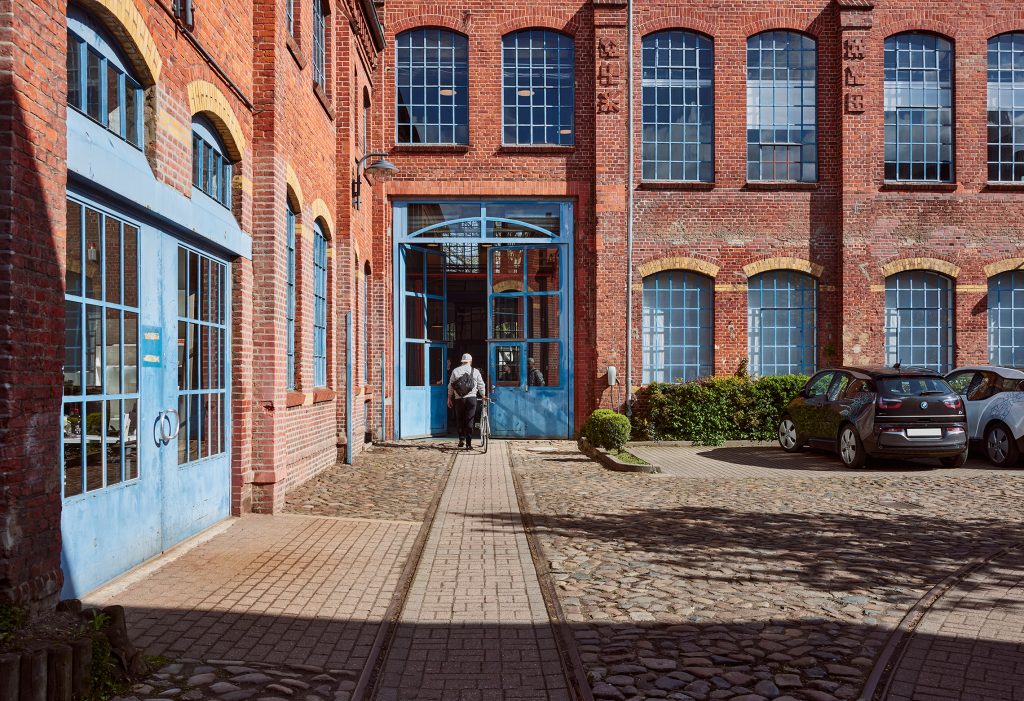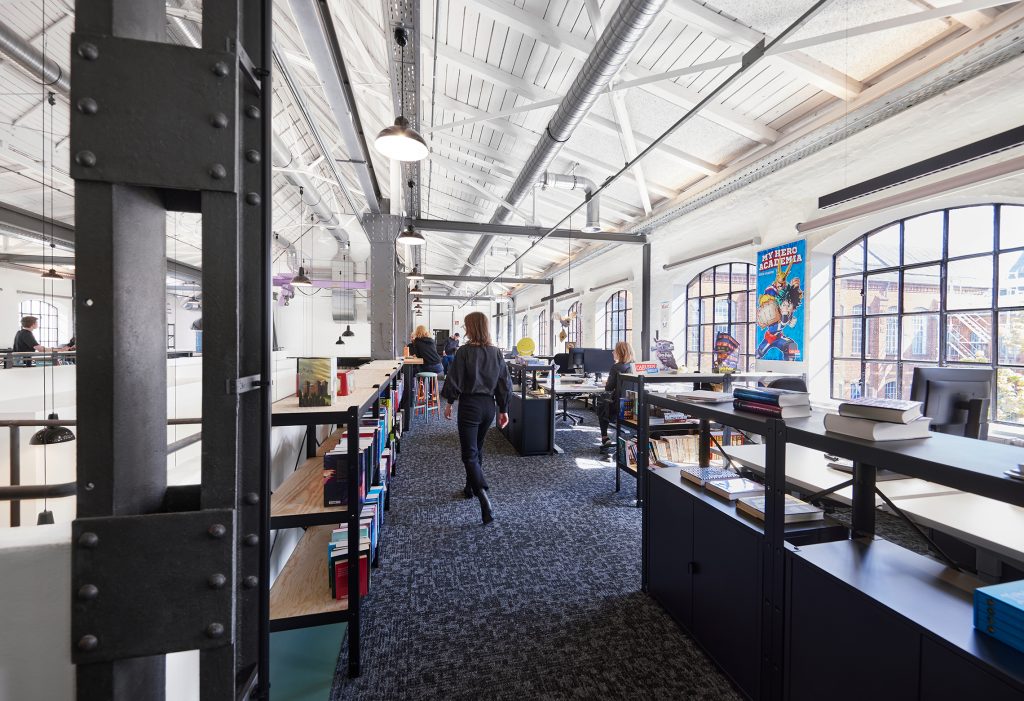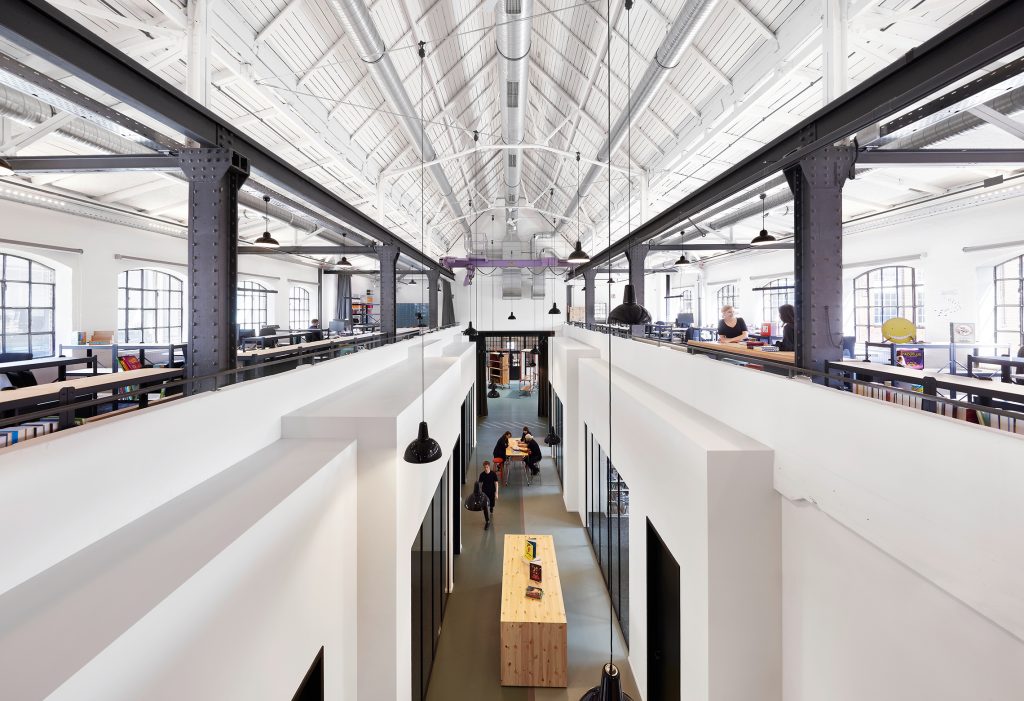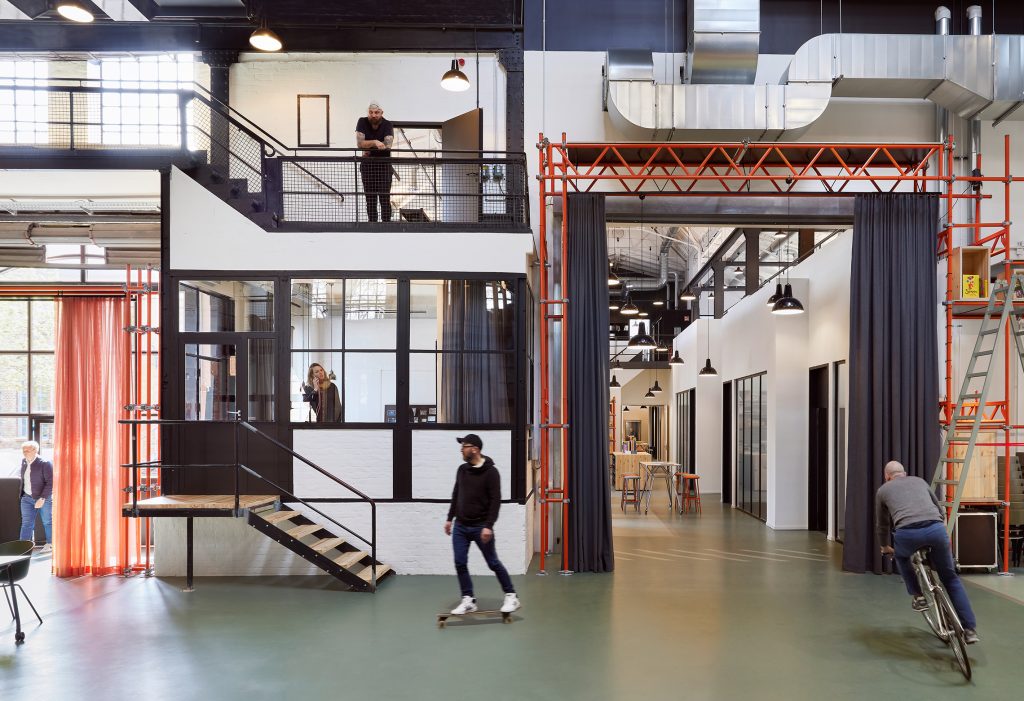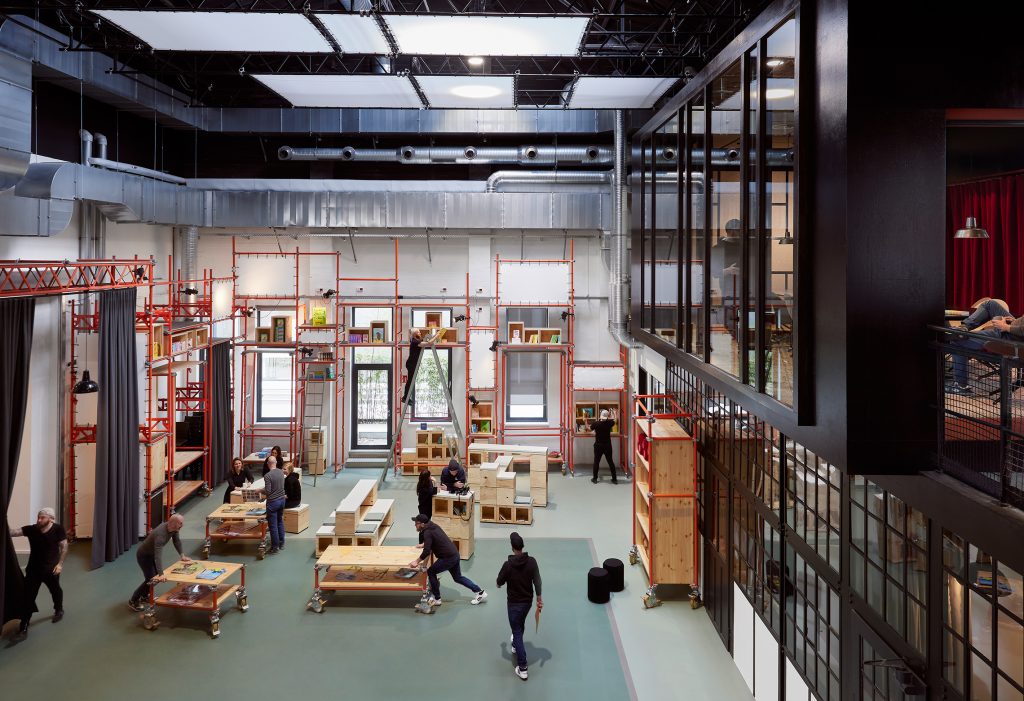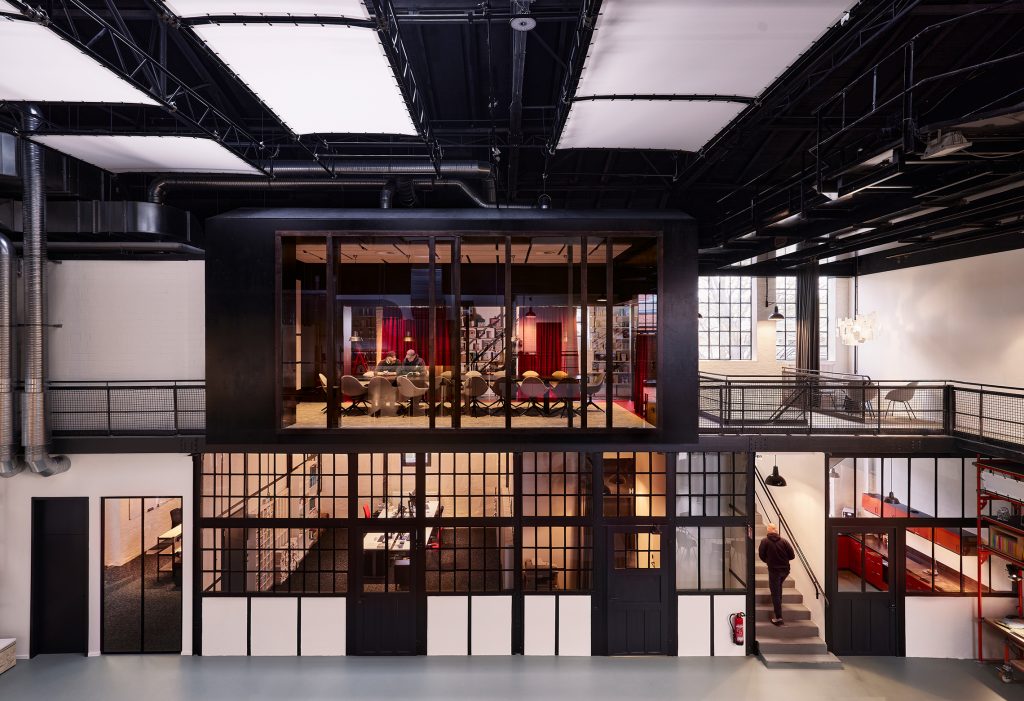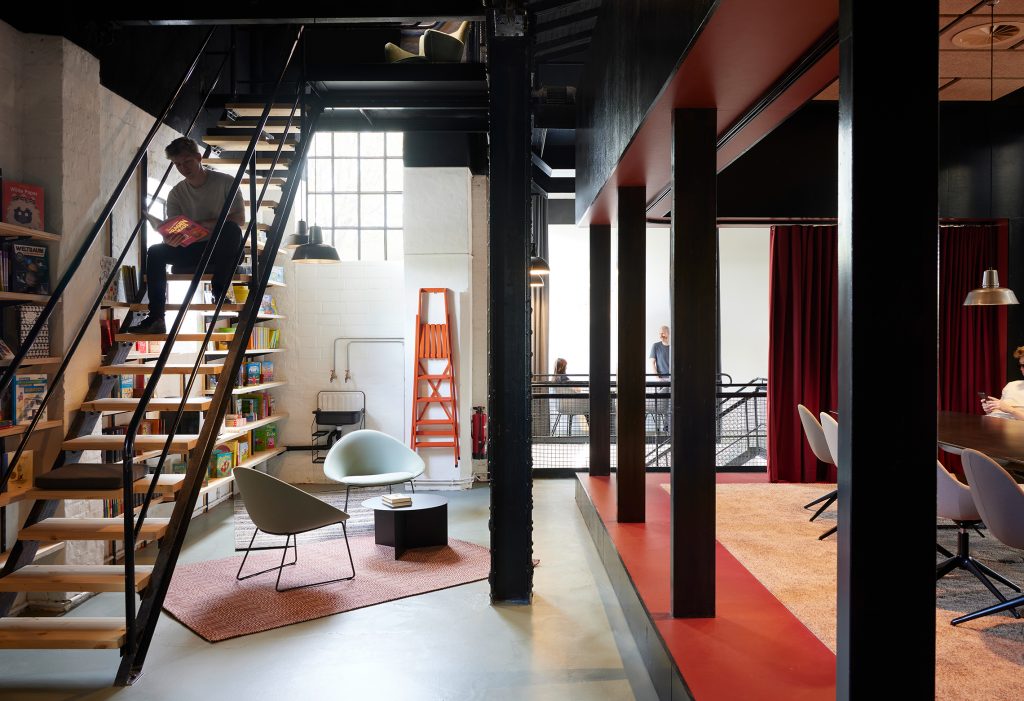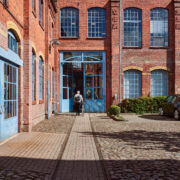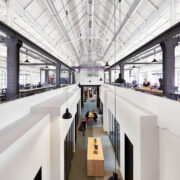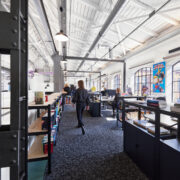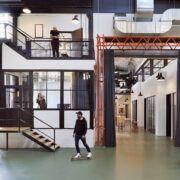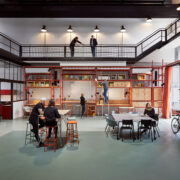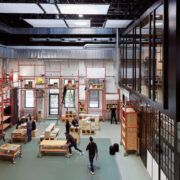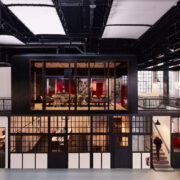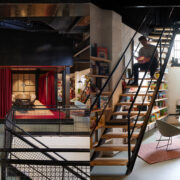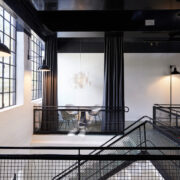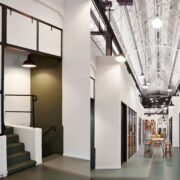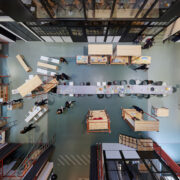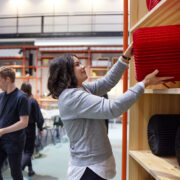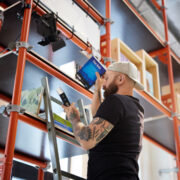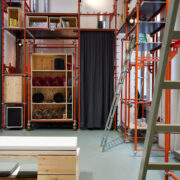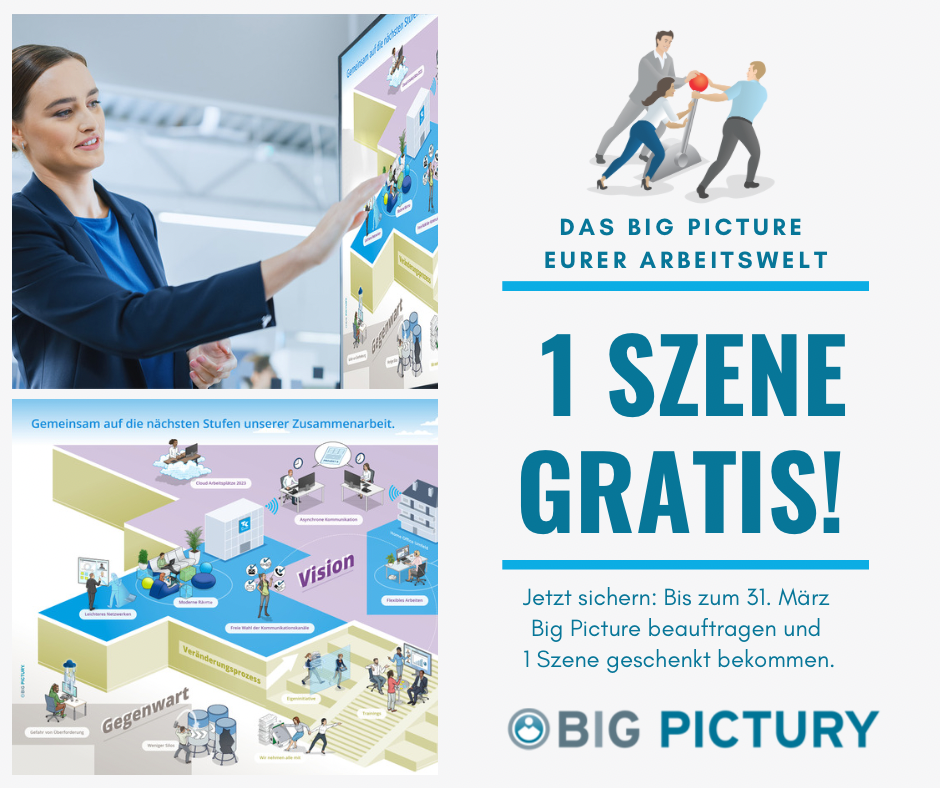In an industrial building complex in Hamburg’s Altona district, new offices were completed for the Carlsen children’s and young adult book publisher. The new space is part of the future publisher campus currently in development on the plot at Völckersstraße 20, adding a further, larger site right next to the company’s publishing house at that location.
Where previously the focus was on industrial production, more than 70 of the publisher’s employees work here now. A big challenge of the project was the conversion of the heterogeneous hall buildings into an efficient office environment that would fulfil the publisher’s specific requirements. The goal of the cautious interventions was to leave the old usage of the halls visible while at the same time providing space for the new usage. Thus, while handling the existing buildings with great responsibility, a new set of rules was prepared for the conversion to a state-of-the-art office landscape.
The new two-storey office space is divided into two clear hall sections: a big hall with a very high roof construction extending into the upper storey, and a small hall as a kind of wing. The ground floor of the small hall contains the main entrance to the new Carlsen office. In the connecting, so-called “promenade”, room-high boxes were arranged that protrude to varying extents and contain single, double and four-person offices and reach up to the gallery level on the upper storey. This 35-metre-long corridor through the room-in-room situations accommodates informal meetings and provides an open view of the big hall, the centrepiece of the new publishing house.
In the big hall that opens into the upper storey, an approx. 230 m2 event area has been installed as a “marketplace” that can be separated from the workspace by curtains. The event space was given a new graphical floor coating in the existing green industrial floor look, which simultaneously creates zones for a wide range of usage scenarios. A translucent curtain at the separate entrance to the marketplace allows natural light into the space. The graphical design of the floor extends all the way in to the promenade and supports its usability.
A special feature in the style of the former industrial atmosphere is the room-high, red scaffolding that extends upwards on three sides of the event space. This can be used for different purposes and also adds to the attractiveness of the area. The scaffolding accommodates furniture such as benches and temporary workspaces, provides storage area for furnishings, integrates the library, the technical store and the media and ventilation equipment, can be converted for catering situations or book presentations if required, and provides options for hanging and back-lighting printed canvases for various event formats.
The top floor of the small hall contains fixed gallery workplaces, a small open space for the press and marketing team, a large meeting room, and a library area with a lounge atmosphere. The floor of the glazed meeting room extends into the open, room-high event space and accommodates up to 16 persons. From the surrounding access corridor there are views of the ground floor.
To retain the charm of the hall, very careful interventions were carried out to uncover a variety of traces of the usage in past epochs, and these were integrated very visibly into the new room structure. For example, spread throughout the area are old gear levers and operating panels, the traces of former doorways and windows, and the remains of crane trains or old paintwork, which blend atmospherically with the new room usage. The colour concept also picks up on these traces and carries them over into the present. Thus, the existing green and red tones from the industrial period that were discovered here are evident throughout the entire area, and complement the reserved white and grey in the floors, textiles and tiles in the office space.
A revitalization of the publisher’s existing office in the building across the street is currently underway. The approach for the newly developed office space is to be picked up and continued in design terms, in order to enhance and support the new Carlsen campus in its future perspective.
Mark Seelen Photography www.markseelen.com
